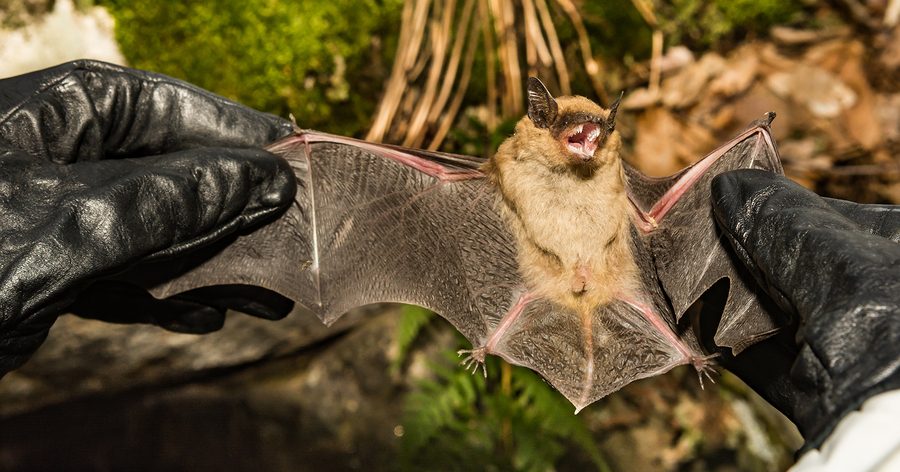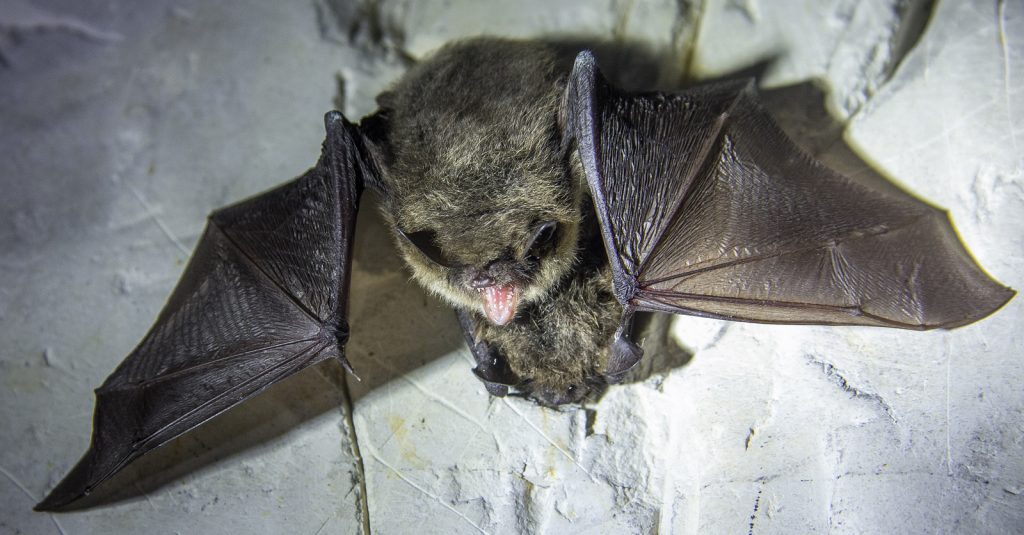Bats are known hosts to more than 60 Zoonotic viruses, all of which can be transmitted to people, pets, and other animals. Additionally, bats are carriers of several infectious viruses, bacteria, and parasites that can also be contagious. However, there are some illnesses that bats can contract, but cannot pass onto us. And White Nose Syndrome (WNS) is one of the most common examples of such illnesses.
Continue reading to learn more about White Nose Syndrome in bats, as well as, how you can protect your home or building from nuisance bat interference.

White Nose Syndrome (WNS)
Hibernating bats are vulnerable to a debilitating disease called White Nose Syndrome (WNS). It gets its name from the distinctive symptoms it renders in bats, namely a white fungal growth on their noses, muzzles, and other areas of the body. In North America, this disease is spreading quickly among Microchiroptera populations, and has caused millions of bat fatalities. Eastern parts of the country have been most affected, but reports of WNS detection have come as far West as Oklahoma, and as far North as Canada. Continue reading to learn more facts about White Nose Syndrome in bats.
Top Facts About WNS:
⇛ Bats infected with WNS will show strange signs and exhibit odd behaviors. This includes daytime activity and clustering near the entry points of their roost.
⇛ According to White-Nose Syndrome.org, WNS has caused more than 5.5 million bat deaths to-date in the Northeast parts of the United States and Southern parts of Canada.
⇛ State and federal biologists are working with several laboratories to continue studying and investigating the correlation between fungi and bat deaths.
⇛ White Nose Syndrome affects bats that hibernate. More than 45% of bats in our country are hibernating species, four of which are endangered and already suspected of being infected.
⇛ Known species affected by WNS include the Big Brown bat (Eptesicus fuscus), Little Brown bat (Myotis lucifugus), Eastern small-footed bat (Myotis leibii), Endangered Gray bat (Myotis grisescens), Indiana bat (Myotis sodalis), Northern long-eared bat (Myotis septentrionalis), and Tricolored bat (Perimyotis subflavus).
⇛ Species that are suspected, but not yet confirmed, to be infected with WNS include the endangered Virginia Big-Eared bat (Corynorhinus townsendii virginianus) and the endangered Ozark big-eared bat (Corynorhiunus townsendii ingens).
⇛ WNS is still spreading across North America. Today, more than 19 states (Alabama, Connecticut, Delaware, and Indiana) and 4 Canadian provinces have been confirmed sites of WNS outbreaks.
⇛ Geomyces destructans is a newly-discovered fungus that is suspected to cause White Nose Syndrome in bats.
⇛ Species that are suspected, but not yet confirmed, to be infected with Geomyces destructans include the Cave bat (Myotis velifer) and the Southeastern bat (Myotis austroriparius).
Indianapolis Bat Removal and Control
Sometimes bats can get too close, and give us trouble. If you have nuisance bats, call 317-535-4605 to speak with a friendly and knowledgeable wildlife abatement specialist about bat removal and control services in Indianapolis, Indiana. Don’t let bats damage your property and cost you thousands of dollars in renovations! Let our DNR licensed and insured bat removal specialists provide the workable solutions you need.



